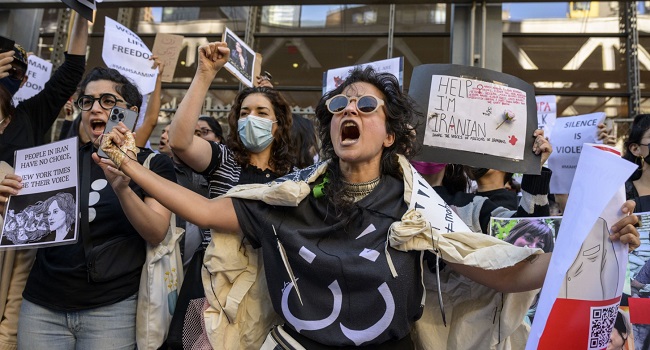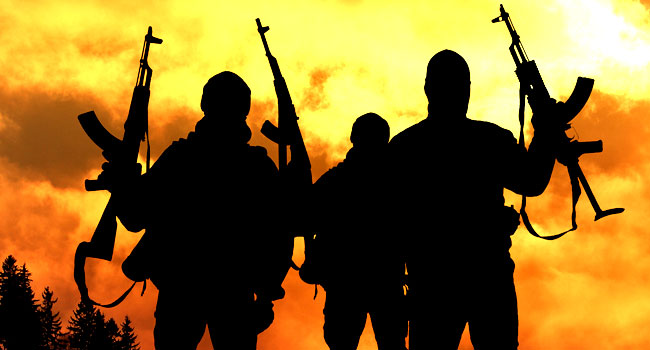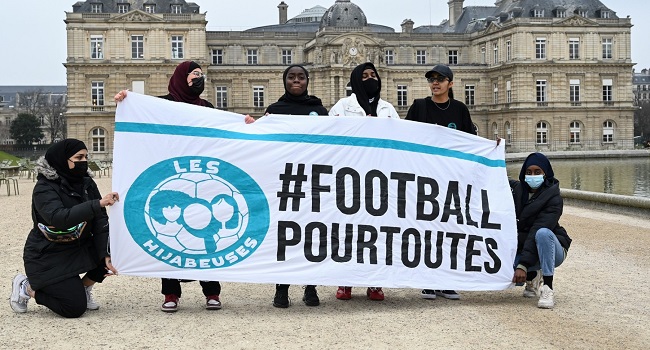
News of Mahsa Amini’s death in morality police custody on September 16 has sparked a wave of unrest across Iran in which dozens of protesters have been killed.
Here are landmark events in the history of the country, once known as Persia, since the 1979 revolution that overthrew the US-backed monarchy and established an Islamic republic.
– 1979: Islamic republic –
After months of protests against his rule, on January 16, 1979, the US-backed shah, Mohammed Reza Pahlavi, leaves the country.
Revolutionary leader Ayatollah Ruhollah Khomeini makes a triumphant return from exile in Paris on February 1.
Ten days later, the shah’s government falls. Public radio hails “the end of 2,500 years of despotism”.
An Islamic republic is proclaimed on April 1.
– 1979-81: US hostage crisis –
Students backing Khomeini take 52 Americans hostage at the US embassy in Tehran on November 4, 1979, to protest the ex-shah’s admission to hospital in the United States.
Washington severs diplomatic relations in 1980. The hostages are only freed on January 20, 1981.
– 1980-88: Iran-Iraq war –
Iraq attacks Iran on September 22, 1980, after Iraqi president Saddam Hussein tears up a 1975 treaty on the strategic Shatt al-Arab waterway.
This triggers a gruelling eight-year war that is estimated to have cost hundreds of thousands of lives on both sides.
It ends on August 20, 1988 with a UN-brokered ceasefire.
– 1989: Rushdie fatwa –
Khomeini issues a religious edict, or fatwa, on February 14, 1989, calling for the death of author Salman Rushdie for what the supreme leader deemed the blasphemous nature of his book “The Satanic Verses”.
Rushdie spends years in hiding. More than three decades later, in August 2022, he is seriously wounded in a stabbing on stage at an event in New York.
– 1989: Khamenei takes over –
Khomeini dies on June 3, 1989. Ayatollah Ali Khamenei, president since 1981, becomes supreme leader.
Moderate conservative Akbar Hashemi Rafsanjani is elected president weeks later.
Re-elected in 1993, Rafsanjani orchestrates a relative opening up of the government and post-war reconstruction.
– 1999: Student protests –
Rafsanjani’s reformist successor, Mohammad Khatami, runs up against conservative opposition during his two terms from 1997 to 2005.
In 1999, the government faces the biggest protests since 1979, pitting pro-Khatami students against the police.
– 2002: ‘Axis of evil’ –
US president George W. Bush names Iran as part of an anti-American “axis of evil” with Iraq and North Korea, accusing it of supporting terrorism.
– 2005: Ahmadinejad era –
Populist Mahmoud Ahmadinejad is elected president in June 2005.
During his tenure, Iran resumes uranium enrichment, which it had agreed to freeze previously. That alarms the West, which suspects Tehran of wanting to produce a nuclear weapon, something Iran has consistently denied.
A crackdown on nationwide protests against Ahmadinejad’s disputed re-election in 2009 hobbles the reformist movement.
– 2015: Nuclear deal –
The election of moderate cleric Hassan Rouhani as president in 2013 marks a warming of relations with the West.
Iran reaches a deal on its nuclear programme with world powers, including the United States, on July 14, 2015 after 21 months of negotiations.
It gives Tehran relief from crippling economic sanctions in exchange for limits on its atomic activities.
– 2018: US quits nuclear deal –
US president Donald Trump on May 8 abandons the nuclear deal and begins reimposing unilateral sanctions on Iran.
A year later Tehran begins gradually stepping back from its own commitments. Negotiations in 2021-2022 to revive the deal repeatedly stumble.
– 2019: Mass protests –
A hike in the price of petrol sparks in November 2019 sparks major protests.
A crackdown on demonstrations across Iran leaves 304 people dead, according to Amnesty International.
– 2020: Top commander, scientist killed –
A US drone strike on January 3, 2020 kills top Iranian commander Qasem Soleimani in Iraq, heightening fears of a direct confrontation after a series of incidents involving Gulf shipping.
Five days later, Iran launches a volley of missiles at US troops stationed in Iraq, but the standoff later eases.
In November, top nuclear scientist Mohsen Fakhrizadeh is killed in an attack on his car near Tehran. Iran blames the killing on Israel.
– 2021: Ultraconservative president –
Ebrahim Raisi, an ultraconservative former judiciary chief, is elected president in June 2021, in a vote marked by low turnout.
– 2022: Hijab protests –
Mahsa Amini, 22, dies in September after her arrest in Tehran by the feared morality police for allegedly breaching Iran’s strict rules on hijab headscarves and modest clothing for women.
A cousin of Amini says she died after a “violent blow to the head”, which Iranian officials deny.
Dozens of people are killed in a crackdown on women-led street protests in cities across the country.
Women burn their scarves and symbolically cut their hair in protest at Amini’s death and the strict dress code.




